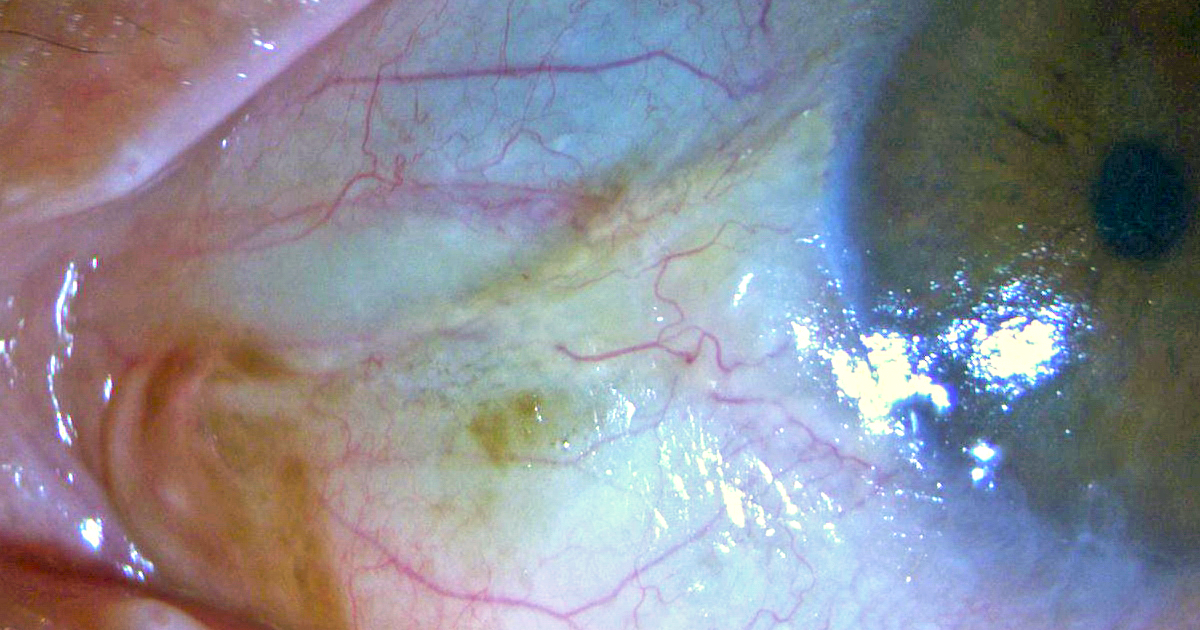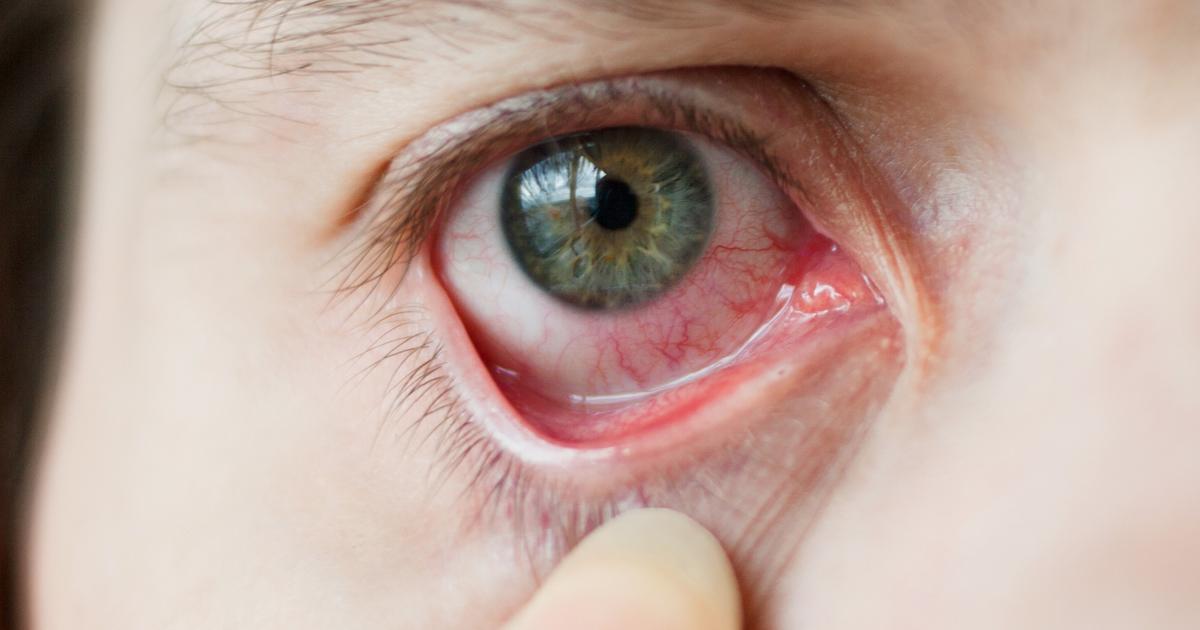Guide To Vitamin A Deficiency Symptoms
Vitamin A deficiency is a condition in which an individual does not have a sufficient amount of vitamin A in their body. Vitamin A helps develop and maintain mucous membranes, healthy teeth, soft tissue, skeletal tissue, and the retina. There are three different forms of vitamin A, including carotenoids, retinol, and beta carotenes. Vitamin A deficiency can occur when an individual's body is unable to absorb fats from consumed food, or when their metabolism has become altered. A lack of vitamin A ingestion can also result in this type of deficiency. It is recommended that children consume between three and six hundred micrograms of vitamin A per day, while adults are recommended to have between seven and nine hundred micrograms daily. Vitamin A deficiency can be diagnosed with a physical examination, blood tests, electroretinography, and treatment trials.
Several symptoms can be indicative of a vitamin A deficiency. Learn about them now.
Night Blindness

Night blindness, also known as nyctalopia, is where an individual cannot see properly in conditions of dark or dimly lit environments, including at night. An individual's retina must function properly to enable them to see correctly in low light. The retina is made up of light-sensitive cells called rods and cones that contain substances called photopigments, which are responsible for communicating light to the brain. The photopigment most associated with night vision is called rhodopsin. When an individual moves from a lighted environment to a darker environment, the photopigments undergo a process referred to as dark adaptation. However, an abundant supply of vitamin A is required for rhodopsin to become activated in dark adaptation. In vitamin A deficiency, rhodopsin is unable to interact with the brain, and dark adaptation does not occur to the extent that would produce adequate night vision. Nyctalopia is one of the first symptoms to manifest in individuals who are vitamin A deficient.
Uncover information on more symptoms of a vitamin a deficiency now.
Xerophthalmia

Xerophthalmia is a disease that progressively affects an individual's eyes when they have a vitamin A deficiency. Patients deficient in vitamin A have corneas that become excessively dry as a result of dried out tear ducts. An affected individual's eyeball and eyelid lining become excessively thickened and begin to develop wrinkles. The front of a patient's cornea can become cloudy and may develop corneal ulcers. Lesions, deposits of tissue referred to as Bitot's spots, may develop on the cornea of an affected individual. The cornea is responsible for focusing and transmitting light into the eye and onto the retina. An individual's cornea must be free of debris and defects for them to be able to see properly. In the advanced stages of xerophthalmia, blindness occurs when part or all of a patient's cornea becomes liquified.
Keep reading to learn more about the warning signs of a vitamin A deficiency now.
Dry And Scaly Skin

Vitamin A is a critical nutrient to the development and management of healthy skin tissues. This vitamin stimulates mitosis of skin cells and keeps the skin healthy by activating certain genes that cause immature skin cells to grow and differentiate into mature epithelial skin cells. Vitamin A is essential for keeping the epithelial layer of the skin thick enough to provide a satisfactory barrier to protect against exterior influences and conditions. Adequate levels of vitamin A ensure there are enough Langerhans cells in an individual's epidermis. Langerhans cells are dendritic cells specialized to stimulate responses from the individual's immune system when the skin becomes infected. Vitamin A is responsible for helping with glycosaminoglycan synthesis in the skin. Glycosaminoglycans are water-binding substances that help the skin hold moisture. Those deficient in vitamin A tend to develop excessively dry and scaly skin due to a combination of malfunctions in the aforementioned processes.
Read more about vitamin A deficiency symptoms now.
Respiratory Infections

Vitamin A is an important component of the early development of an individual's lungs, including the formation of alveoli or small air sacs in the lung. It is imperative to the maintenance and regeneration of the epithelial lining inside of an individual's lungs, which is known to have a high cell turnover rate. The epithelial lining functions as a physical barrier to keep foreign pathogens and other substances from entering the inner body tissues. This lining also protects the body against numerous bacterial and viral infections through its signaling functions in conjunction with other components of lung physiology. An individual deficient in vitamin A will experience alterations in their lung parenchyma and pulmonary epithelial lining. These alterations impair the normal functional processes of defense that should occur in the lungs when making contact with pathogens, allergens, and irritants. Therefore, an individual who has vitamin A deficiency is more vulnerable to contracting respiratory infections than someone who has healthy lungs.
Get more details on the warning signs of a vitamin A deficiency now.
Delayed Growth

Vitamin A is imperative to the proper development and growth of the human body as a whole, and numerous studies have proven a link between poor child growth and severe deficiency of vitamin A. However, the exact mechanism behind this association is not yet fully understood. Children who experience other common symptoms of a vitamin A deficiency, like xerophthalmia, have less linear growth and weight gain than healthy children of the same age. The mechanism is thought to be involved with the cell replication and differentiation promoting effects that vitamin A has on multiple types of tissues around the body. Children who have experienced stunted growth as a result of their vitamin A deficiency can benefit from supplementation. Vitamin A supplementation in some children has proven to be able to reverse their stunted growth caused by their vitamin A deficiency.
Learn more about the different indicators of vitamin A deficiency now.
Bitot's Spots

First described in 1863, Bitot's spots are deposits of keratin that form on the conjunctiva of the eyes. A vitamin A deficiency is the most common cause of these spots, and they are frequently found in pediatric patients in the developing world. Untreated Bitot's spots could lead to blindness. To assess these spots, the doctor will begin by performing a general physical examination. They will check the patient's weight and build to determine whether malnutrition or malabsorption could be present, and the physician will also need to palpate the patient's abdomen to detect potential liver enlargement. A detailed eye examination will likely include the Schirmer test, lissamine green staining, and conjunctival impression cytology to obtain more information about the health of the ocular surface. Bitot's spots typically respond well to treatment with high doses of vitamin A, and most patients experience a significant improvement in the spots within two weeks of beginning treatment.
Discover additional symptoms of a vitamin A deficiency now.
Keratomalacia

Keratomalacia is a progressive eye disorder involving the clouding and softening of the cornea (the clear part at the front of the eye). This disorder occurs in patients with severe deficiencies in vitamin A, and both eyes are often affected. At first, patients with this condition could notice extreme dryness of their cornea or conjunctiva, and Bitot's spots may form as the condition advances. Patients may also experience difficulty with adjusting their vision when going from a bright environment to a darker one. To diagnose keratomalacia, doctors will need to perform a complete eye examination, and blood tests will be required to check for a vitamin A deficiency. Some patients might be advised to have an electroretinography test so doctors can confirm the diagnosis. High doses of vitamin A are used to treat this condition, and patients will be prescribed lubricating eye drops and antibiotic eye drops to ease symptoms. If the cornea has significant damage, a surgical procedure called a keratoplasty may be beneficial. This procedure transplants a new cornea into the patient's eye.
Read more about the various warning signs of vitamin A deficiency now.
Dry Eyes

Dry eyes can occur with a mild deficiency in vitamin A. Patients might notice their eyes feel as though they have sand or grit in them, and there may also be a burning sensation. Eye redness, eye fatigue, blurry vision, and sensitivity to light could develop, and patients may notice their eyes are very watery. Nighttime driving and wearing contact lenses could pose difficulties. If left untreated, dry eyes could lead to complications such as infections, corneal abrasions or ulcers, and eye inflammation. Doctors assess dry eyes by measuring the volume and quality of the patient's tears. If a vitamin A deficiency is suspected, the doctor may also order a blood test. Patients who have dry eyes due to this deficiency will be prescribed high doses of vitamin A, and artificial tears could be prescribed to reduce eye pain and scratchiness. Corticosteroids and antibiotics might be recommended to reduce eye inflammation.
Get more details on the symptoms associated with a deficiency in vitamin A now.
Poor Wound Healing

Vitamin A helps the body manufacture collagen, a major component of healthy skin. Deficiencies in this vitamin could lead to poor wound healing in some individuals. The amount of time it takes for a wound to heal depends on several factors, including the depth, location, and size of the wound. In healthy patients, it typically takes between one to four weeks for a wound to heal. Individuals who have a sore or cut following an injury should closely monitor the affected area for signs of infection, including warmth or skin darkening around the affected area, and medical care should be obtained if these occur. Immediately after the injury, the wound should be placed under running water before the area is patted dry with a clean towel. Antibiotic ointment should be applied, and the wound should then be bandaged with an adhesive bandage or a sterile gauze wrap. Patients will need to change the bandage at least once a day, and the wound should be checked for changes during this time. The bandage should also be changed any time it becomes wet or soiled, and more antibiotic ointment should be applied each time the bandage is changed. To improve wound healing, some patients like to apply manuka honey. Wounds that show no signs of improvement after one week should be assessed by a doctor, and wounds that don't heal after four weeks may require assessment by a wound care specialist.
Learn more about the signs of a deficiency in vitamin A now.
Increased Breakouts

Vitamin A assists the body in fighting inflammation and in creating new skin, and patients who are low in this vitamin could notice increased breakouts. These breakouts are likely connected to the reduced inflammation-fighting capabilities and wound healing capacities of patients that vitamin A deficiency involves. Patients might notice more acne on the face and body, and breakouts may take longer to treat. Individuals who are concerned about these breakouts may want to ask their doctor for a blood test to measure their vitamin A levels, and the application of topical vitamin A creams could help speed up the treatment of existing breakouts and prevent new ones from occurring.